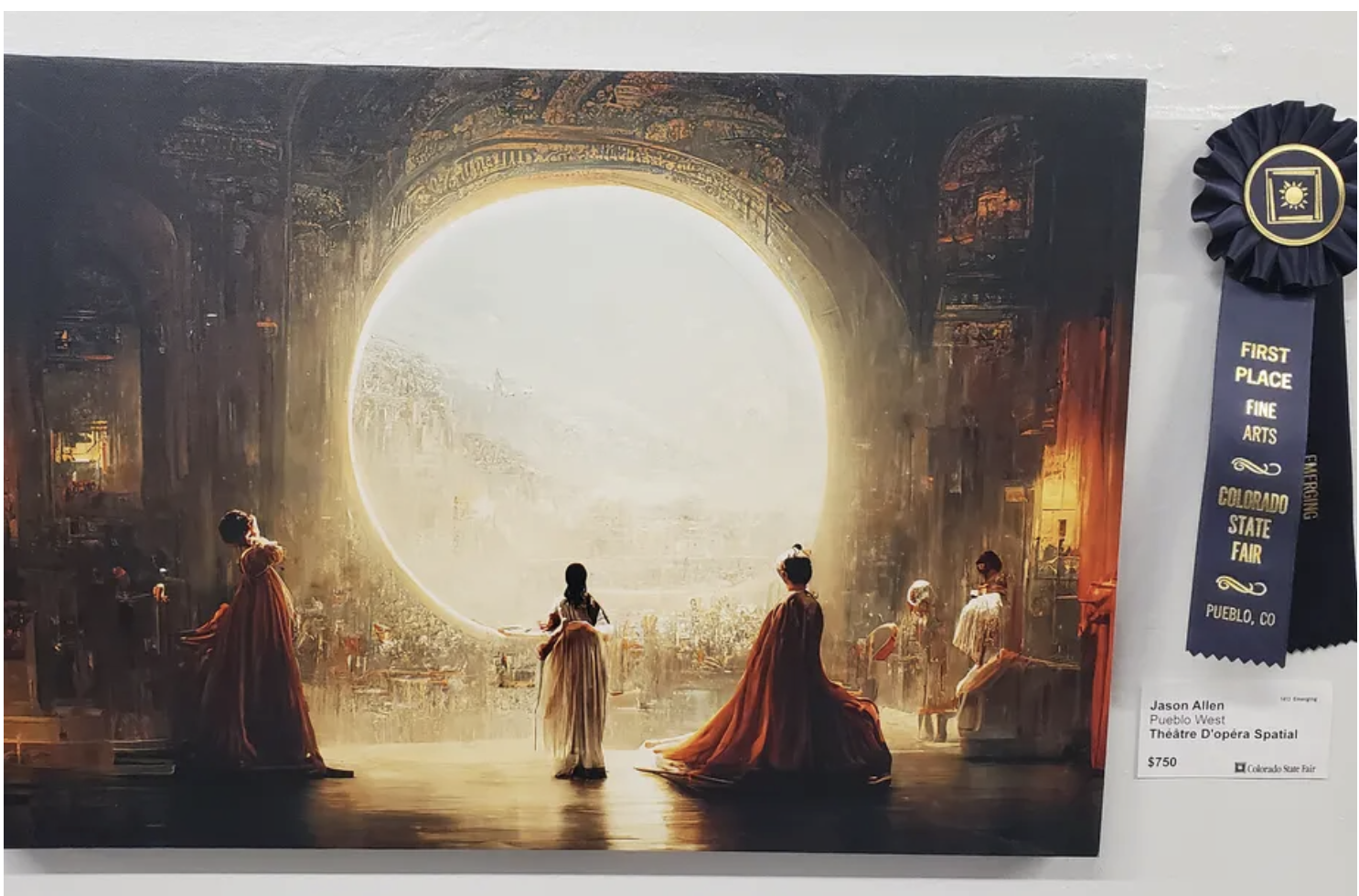A game-changer for content creation
Among the AI-related technologies to have emerged in the past several years is generative AI—deep-learning algorithms that allow computers to generate original content, such as text, images, video, audio, and code. And demand for such content will likely jump in the coming years—Gartner predicts that by 2025, generative AI will account for 10% of all data created, compared with 1% in 2022.

“Théâtre D’opéra Spatial” is an example of AI-generated content (AIGC), created with the Midjourney text-to-art generator program. Several other AI-driven art-generating programs have also emerged in 2022, capable of creating paintings from single-line text prompts. The diversity of technologies reflects a wide range of artistic styles and different user demands. DALL-E 2 and Stable Diffusion, for instance, are focused mainly on western-style artwork, while Baidu’s ERNIE-ViLG and Wenxin Yige produce images influenced by Chinese aesthetics. At Baidu’s deep learning developer conference Wave Summit+ 2022, the company announced that Wenxin Yige has been updated with new features, including turning photos into AI-generated art, image editing, and one-click video production.
Meanwhile, AIGC can also include articles, videos, and various other media offerings such as voice synthesis. A technology that generates audible speech indistinguishable from the voice of the original speaker, voice synthesis can be applied in many scenarios, including voice navigation for digital maps. Baidu Maps, for example, allows users to customize its voice navigation to their own voice just by recording nine sentences.
Recent advances in AI technologies have also created generative language models that can fluently compose texts with just one click. They can be used for generating marketing copy, processing documents, extracting summaries, and other text tasks, unlocking creativity that other technologies such as voice synthesis have failed to tap. One of the leading generative language models is Baidu’s ERNIE 3.0, which has been widely applied in various industries such as health care, education, technology, and entertainment.
“In the past year, artificial intelligence has made a great leap and changed its technological direction,” says Robin Li, CEO of Baidu. “Artificial intelligence has gone from understanding pictures and text to generating content.” Going one step further, Baidu App, a popular search and newsfeed app with over 600 million monthly users, including five million content creators, recently released a video editing feature that can produce a short video accompanied by a voiceover created from data provided in an article.
Improving efficiency and growth
As AIGC becomes increasingly common, it could make content creation more efficient by getting rid of repetitive, time-intensive tasks for creators such as sorting out source assets and voice recordings and rendering images. Aspiring filmmakers, for instance, have long had to pay their dues by spending countless hours mastering the complex and tedious process of video editing. AIGC may soon make that unnecessary.
Besides boosting efficiency, AIGC could also increase business growth in content creation amid rising demand for personalized digital content that users can interact with dynamically. InsightSLICE forecasts that the global digital creation market will on average grow 12% annually between 2020 and 2030 and hit $38.2 billion. With content consumption fast outpacing production, traditional development methods will likely struggle to meet such increasing demand, creating a gap that could be filled by AIGC. “AI has the potential to meet this massive demand for content at a tenth of the cost and a hundred times or thousands of times faster in the next decade,” Li says.
AI with humanity as its foundation
AIGC can also serve as an educational tool by helping children develop their creativity. StoryDrawer, for instance, is an AI-driven program designed to boost children’s creative thinking, which often declines as the focus in their education shifts to rote learning.
